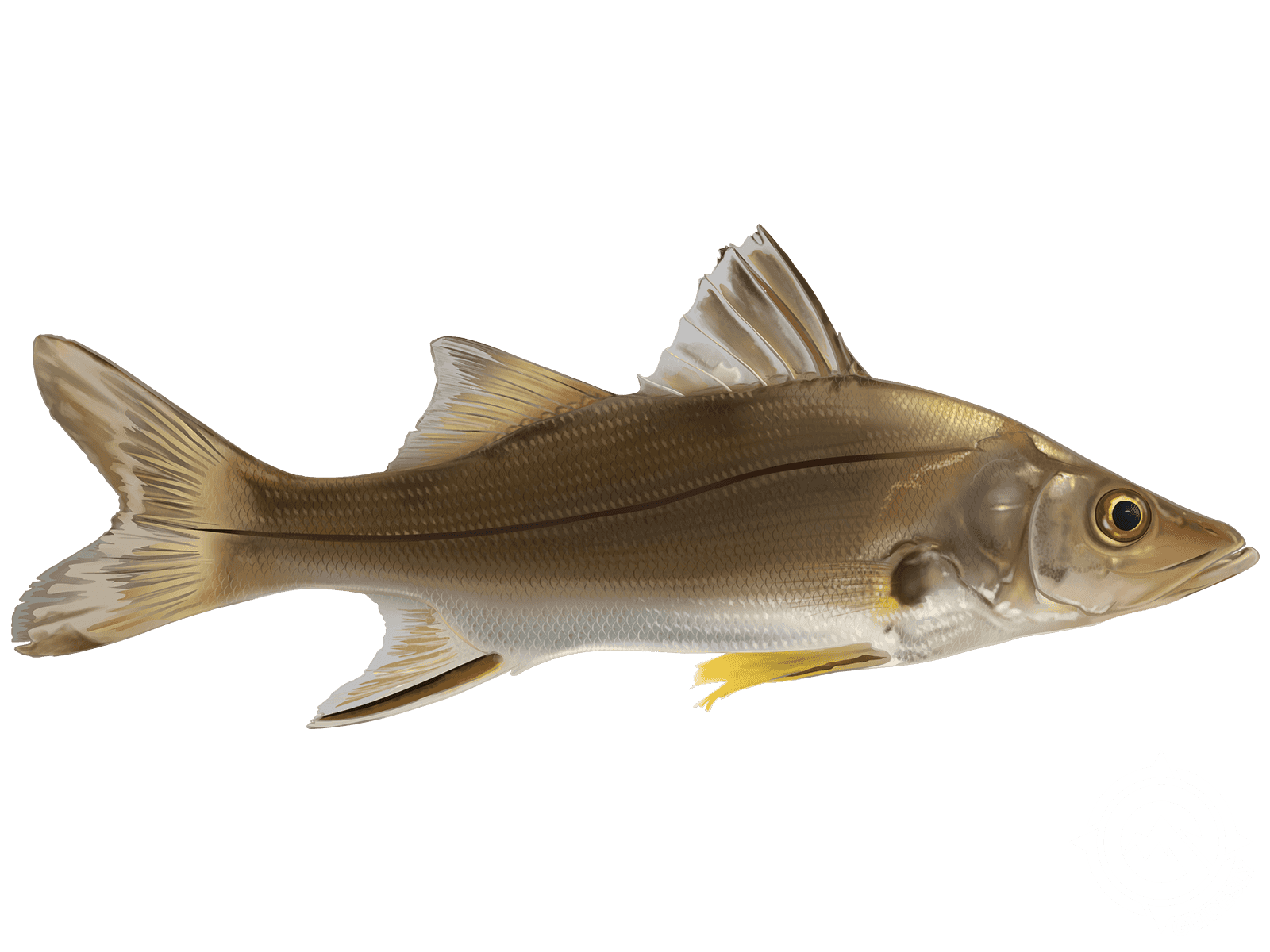Fat Snook

Species Details
Centropomus Parallelus
Centropomidae
Perciformes
Inshore, Mangroves
6 - 10 lbs.
12" - 28"
Fat Snook (Centropomus Parallelus)
Fish Description
This very popular Florida fish has a distinctive body shape with a tapered head and snout, large fins, and the most prominent feature of this snook species is its black stripe that runs through the length of the lateral line. The color of this snook species is yellow, brown, and dark gray around the dorsal surface, shading to silver on the sides and yellow fins. As with many inshore fishes, their color may vary according to season and habitat. They also have a large mouth that has bands of villiform teeth.
Fat Snook Size
The Fat Snook, on average, weighs 6 to 10 pounds and is 12 inches. They can, however, can grow to 28 inches. The average lifespan of a female fat snook is about 15, while that of the male is around 21 years.
Fat Snook Fun Facts
Although the female fat snook tends to be slightly longer than males, there is no physical difference between the female and the male.
There are 12 different types of fish in the snook species. Six are in the Pacific Ocean, and six are in the Atlantic Ocean.
They are very susceptible to temperature changes and may die when Florida experiences sudden cold front.
They like to feed at night.
Fat Snook Spawning
This inshore species spawns mainly during summer months because even though they live in both saltwater and freshwater, they only spawn in saltwater. They also cannot survive in the water temperature below 60 degrees for long periods of time, and for that reason, they spawn in summer when the water is at its warmest temperature. Females can spawn every two days and release over a million eggs at a time. They prefer the mouths of coastal rivers and main outlets of the ocean for their spawning sites.
Fat Snook Diet
The Fat Snook feeds on smaller fish and large crustaceans like crabs and shrimps. They are referred to as "ambush feeders" as they surprise-attack their prey as it moves into range. This attack happens mainly at the mouths of inlets where currents play a part. The Snook hides behind bridge piling, and other submerged structures or rocks then attacks its prey. They are twilight and nocturnal feeders.
Fat Snook Method and Lures
Although baitcasting and spinning tackle is the most widely used tackle, light saltwater fishing rods will show you a lot of action, especially when live-baiting in the inlets and passes. Fishing from bridges and piers requires heavier equipment. Fly anglers will want to use large poppers and streamers, for the most part. Suggest lures include bucktail, mirror plugs, plastic jig, spoons, jerk plugs, and lugs. Any small fish also makes a good bait, including crabs and shrimp. Schooling baitfish like pilchards, works very well as both bait and live chum. Large dead baits such as the ladyfish and mullet heads are good for trolling, drifting, casting, and still fishing.
Habitat
Fat Snook are found in mangrove shorelines, estuaries, springs, and inland rivers due to their tolerance of freshwater and saltwater. Look for them by bridges, seawalls, pilings, and reefs.
Distribution
The Fat Snook is found as far north as North Carolina, all around the Florida coast to the Gulf of Mexico and Texas. They are strongly populated in Florida.







